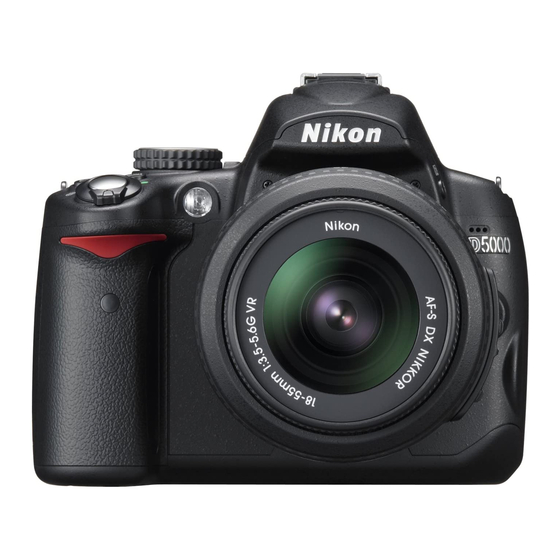Nikon D5000 Manuale - Pagina 29
Sfoglia online o scarica il pdf Manuale per Obiettivo della fotocamera Nikon D5000. Nikon D5000 32. Nikon digital slr camera product brochure
Anche per Nikon D5000: Opuscolo (9 pagine), Scheda informativa (2 pagine), Manuale di riparazione (20 pagine)

Because there are no black pixels in your monitor, the color space uses a combination
of these three colors to display all of the colors in your image.
In 1998, Adobe Systems developed a new color space, Adobe RGB, which was
intended to encompass a wider range of colors than was obtainable using traditional
cyan, magenta, yellow, and black colors (called CMYK) but doing so using the primary
red, green, and blue colors. It uses a wider-defi ned palette of colors than the sRGB
space and, therefore, looks better when printed.
A LITTLE COLOR THEORY
The visible spectrum of light is based on a principle called additive color and is based on
three primary colors: red, green, and blue. When you add these colors together in equal
parts, you get white light. By combining different amounts of them, you can achieve all the
different colors of the visible spectrum. This is a completely different process than print-
ing, where cyan, magenta, and yellow colors are combined to create various colors. This
method is called subtractive color and has to do with the refl ective properties of pigments
or inks as they are combined.
The choice you need to make when selecting your color space is based on whether
you intend to use your photographs for prints or for online applications. The thing
about selecting a color space is that it does not directly affect the color information
of your images. It simply embeds the color space profi le into the image fi le as instruc-
tions for your computer so that your output device (monitor or printer) can correctly
interpret the colors.
SETTING THE COLOR SPACE
1. With the camera turned on, press the
Menu button.
2. Using the Multi-selector, select the
shooting menu and then highlight the
Color space option and press the OK
button (A).
16
N I K O N D 5 0 0 0 : F R O M S N A P S H O T S T O G R E A T S H O T S
A
